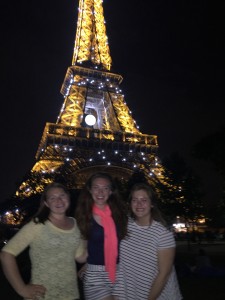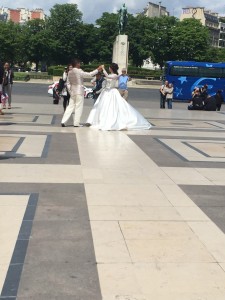Arriving in Berlin on May 26th gave me more culture shock than I initially expected. Being that it’s Germany and, well, it is very westernized, I expected it to feel fairly similar to America in that it’s a big city with modernized buildings, however when I began walking around, I felt that it was a little different than back home. First things first, the Berlin Wall was just standing in various parts of town, sometimes with only a small plaque to tell you what you are looking at. This happened on multiple occasions. I would be walking down a main drag, see a small piece of the Wall or see the line of bricks indicating that the Wall was standing there some 25 years ago, and wouldn’t realize that I was literally crossing over from East to West until seeing the plate on the ground. Granted, it isn’t divided into the different sectors anymore, but regardless, it was pretty awesome.
The Soviet Union constructed the Berlin Wall in 1961 and it stood throughout Berlin for almost 3 decades, creating two distinct cultures on either side of the Wall. In the West, life became modernized fairly quickly since western powers controlled this sector which was quite different from life in the East. It was fun to walk past Checkpoint Charlie and try to imagine what it must have been like trying to get from one allied sector to the next, let alone from the West to the East across the Wall.
Surrounding the Wall and throughout the city, street art was definitely in style. It was everywhere! You would walk down an alley or walk alongside a small piece of the still standing Berlin Wall and see art painted on every square inch. At first I thought that spray painting such an historic landmark was destroying the history of the Wall and city, but then I realized that it’s the street art that had been there since the time of the Wall. The street art showed the colorful culture of both sides of the Wall and helped to explain some of the thoughts that people must have been thinking during the tumultuous times of the Cold War. It completely changed my perspective on how to look at the so-called street art.
My time in Berlin consisted of walking around the city and taking in all of the sites where historic battles took place during WWII, political reformation, and the dissolution of the Nazi Socialist Party. The food was delicious and the atmosphere of German life in a big city was just breathtaking. I am so glad that I decided to travel with the WWII Study Abroad program and I can’t wait to share my memories with those back at home.














